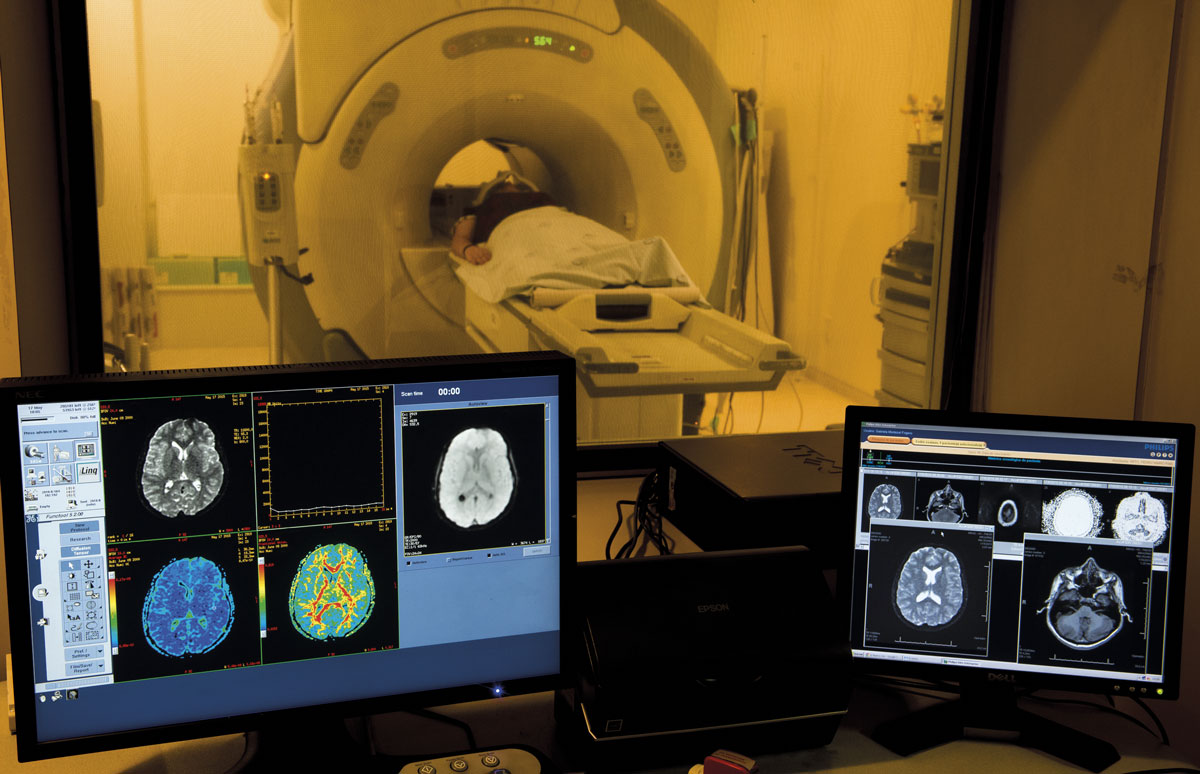Depression—a disorder characterized by a prolonged state of sadness, low self-esteem, and loss of pleasure in previously enjoyable activities—increases in frequency in early adolescence, a period of major change in body and mind. Studies of children and adolescents in the US in the late 1990s found that the proportion diagnosed with depression each year increases from 1% at age 11 to 2% at age 15, then 15% at age 18—on average, one in six people will have an episode of depression at some time in their life. Now, a group of Brazilian researchers has found that a change in reward-network function appears to precede the onset of depression in adolescents by a few years. If confirmed in further research, this could be used as a predictor of future risk for depressive disorder.
These were the conclusions from a study that assessed 529 Brazilian children and adolescents (255 in São Paulo and 274 in Porto Alegre) over a follow-up period of at least three years. Functional brain imaging showed that subjects with the highest reward-network activity and node connectivity had a 54% higher risk of being diagnosed with depression at three-year follow-up than children and adolescents in whom reward circuitry showed lower, adequate levels of activity.
Reward networks were first mapped in rodents in the early 1950s by American psychologist James Olds (1922–1976) and British neurophysiologist Peter Milner (1919). Formed by different areas of the brain that are sensitive to dopamine, a chemical messenger (neurotransmitter) that carries information from one brain cell to another, these networks process the sensations of pleasure experienced when, for example, eating tasty foods, seeing friends, being complimented by one’s boss, or engaging in sexual activity. They also modulate motivation, an inner force that drives people to pursue their desires and satisfy their needs.
In their study with children and adolescents in São Paulo and Porto Alegre, psychiatrist Pedro Pan, a researcher at the Federal University of São Paulo (UNIFESP), and neuroscientist and statistician João Ricardo Sato, a professor at the Federal University of ABC (UFABC), evaluated the degree of connectivity among 11 reward-network nodes with volunteers in a lying and resting state within a magnetic resonance imaging (MRI) scanner. Volunteers were instructed to look at a fixed point and not to focus on any specific thoughts. In this condition, the brain would be at its most fundamental state yet with several brain networks still active, allowing the researches to identify activity intrinsic to brain function.
In subjects with the most highly connected and active reward networks, one area in particular caught the researchers’ attention: the left ventral striatum. This small structure, tucked away in a deep and evolutionarily primitive region of the brain, was more active in children who later developed depression than in those who did not.
 A pre-clinical red flag
A pre-clinical red flag
“This is the first time that aberrant reward-circuit function is observed at rest before clinical symptoms of depression emerge,” says Pan, the lead author of the article describing these findings in the American Journal of Psychiatry, November 2017. According to Pan, the results further support the hypothesis that changes in reward-network function are behind some forms of depression, especially those involving anhedonia, or loss of interest in previously enjoyable activities.
Last year, Pan spent four months analyzing the data in collaboration with psychiatrist Argyris Stringaris, chief of the Mood Brain & Development Unit at the National Institute of Mental Health (NIMH). Previous studies have linked abnormal ventral striatum activity to neurological problems, such as Parkinson’s disease, and psychiatric disorders such as schizophrenia and depression. In 2015, Stringaris found a link between ventral striatum function and depression: the structure became progressively less active as symptoms of depression appeared in adolescents.
The results from Pan’s study and Stringaris’s research might appear to be mutually contradictory, but in fact are not. Stringaris used a different yet complementary strategy. In his study, published in 2015 in the American Journal of Psychiatry, Stringaris had volunteers participate in a game in which they received rewards (candy) as their brain function was imaged. His research, however, could not determine whether the change in striatal activity was the cause or consequence of depression.
“Considered together, the data suggest that changes in the brain begin some time before the clinical onset of the illness,” says Pan. He and Stringaris interpret the initial hyperactivation of the ventral striatum prior to its loss of function as the brain trying to compensate for a problem that has not yet fully developed or as a sign that it is failing to adequately process the stimuli that generate the reward response.
Neuroimaging is being used to identify risk factors in a bid to ally psychiatry with other medical specialties in a preventive approach
A first step
If other studies confirm these findings, then excessive activation of the ventral striatum may become a predictor of depression risk in adolescents. “This is a first step,” says psychiatrist Luis Augusto Rohde, a professor at the Federal University of Rio Grande do Sul (UFRGS) and a coauthor of Pan’s paper. “We now need to replicate the study with other volunteer groups to see if the effect is sustained, and perhaps one day it can be incorporated into clinical practice.” Initially led by Rohde and psychiatrist Euripedes Constantino Miguel, of the University of São Paulo (USP), and now under the charge of psychiatrists Rodrigo Bressan at UNIFESP and Giovanni Salum at UFRGS, the study is the first of its kind in Latin America. Also participating in the research is biologist Andrea Jackowski from UNIFESP, who specializes in neuroimaging. The study, which has assessed 529 volunteers as well as another 2,000 children and adolescents over an extended follow-up period, aims to identify the changes in brain structure and function characterizing healthy maturation and alterations predicting a risk of developing psychiatric disorders (see Pesquisa FAPESP, issue no. 232).
“This study has made several breakthroughs, including successful replication of previous observations in Porto Alegre in children in São Paulo, confirming that the effect from alterations in the ventral striatum on depression is real,” says psychiatrist Christian Kieling, who was not involved in the research. A specialist in child and adolescent psychiatry and a professor at UFRGS, Kieling has developed a scoring system alongside colleagues from the Federal University of Pelotas to predict the risk for depression in adolescents based on social and demographic factors. If successful, the strategy could be used to select at-risk adolescents for neuroimaging studies. “The use of neuroimaging to identify risk factors for depression is a field that is now being explored in a bid to ally psychiatry with other medical specialties in a preventive rather than just a curative approach,” says Kieling.
“If one day we are able identify an increased risk of developing depression from striatum activity, it may be possible to preempt the onset of the disorder,” Pan conjectures. “Psychotherapy methods are available to help manage anhedonia and may be important for this age group.”
Projects
1. INCT 2014: Child and adolescent development psychiatry (No. 14/50917-0); Grant Mechanism Thematic Project; National Science and Technology Institute Program; Principal Investigator Euripedes Constantino Miguel (USP); Investment R$3,418,957.70.
2. High risk cohort study for psychiatric disorders in childhood: 3-year follow-up neuroimaging study (No. 13/08531-5); Grant Mechanism Regular Research Grant; Principal Investigator Andrea Parolin Jackowski (UNIFESP); Investment R$319,256.76.
Scientific article
PAN, P. et al. Ventral striatum functional connectivity as a predictor of adolescent depressive disorder in a longitudinal community-based sample. American Journal of Psychiatry. Vol. 174 (11), pp. 1112–19. Nov. 1, 2017.

